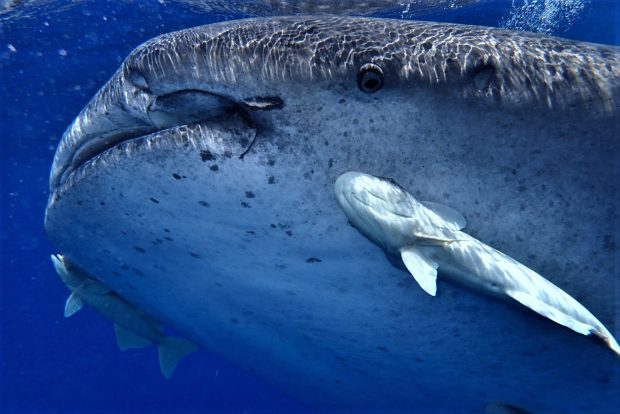
In late 2016, the island of St Helena declared its entire Exclusive Economic Zone (EEZ) as a Category VI Marine Protected Area, with a view at that science, policy and law would gradually evolve within the capability of on-island local resources.
Before the Blue Belt Programme the conservation, management and associated science has fallen to a small group of three dedicated team members and a few volunteers within the Environment and Natural Resources and Planning Directorate of the St Helena Government (SHG) Marine and Fisheries Conservation section. The Blue Belt Programme has catapulted many of the longer-term planned work streams into delivery much faster than could ever have been conceived.
What an amazing four years the Blue Belt programme has facilitated! Like other places in the world, but more so on a small island, being able to help the local audience understand the need for change – whether that be a mind-set, need for policy and law - must be underpinned by a good evidence-based system.
The island has been very fortunate to have had access to the expertise of the UK-based experts at the Centre of Environmental Aquaculture and Fisheries Science (Cefas) and the Marine Management Organisation (MMO) who have readily supported, engineered and advised with the same vigour, passion and enthusiasm as the local people and built on the skills and knowledge that exists on-island. Also, due to St Helena’s Marine Protected Area designation non-governmental organisations such as the St Helena National Trust (SHNT) and the International Pole and Line foundation have also attracted funding to increase local marine conservation capacity, which is amazing.
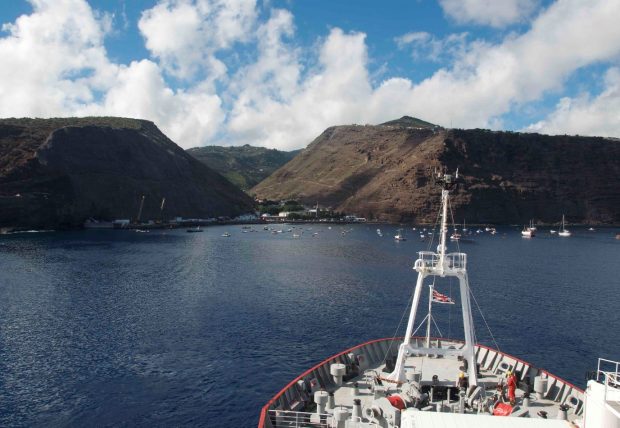
Obviously, due to financial and other practical resourcing constraints, St Helena’s scientists have never had the opportunity to explore and understand the wider ecosystems or the bathymetry with the Exclusive Economic Zone such as the offshore seamounts. With the support of the British Antarctic Survey and Blue Belt, the island has been able to enjoy participation, data collection and capacity building during the 2018 and 2019 research cruises on board the RRS James Clark Ross and RRS Discovery.
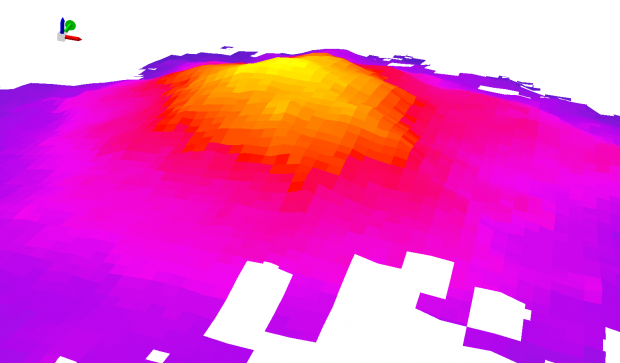
On St Helena, Blue Belt support for the study of key species that are subject to commercial and recreational exploitation has been of significant benefit. From the start of the programme there has been a strong emphasis on the undertaking of fisheries science work and building local capacity in this field. The work has brought together fishers and scientists, all striving for the same goal.
To date, with the support of Cefas fisheries science and stock assessment teams, and after much field work, observer trips and tagging, the island has been able produce a stock assessment report. This directly supports the introduction of a local total allowable catch of one of our key commercial species, the Yellowfin tuna. Preliminarily studies into the capture of bait fish, grouper, lobster and redfish have also been a valuable resource for precautionary management of stocks. Most importantly, all of the above has directly input into an approved fisheries management policy which is currently being translated into new, modern, fit for purpose fisheries legislation, and which we hope to be enacted by the end of this year.
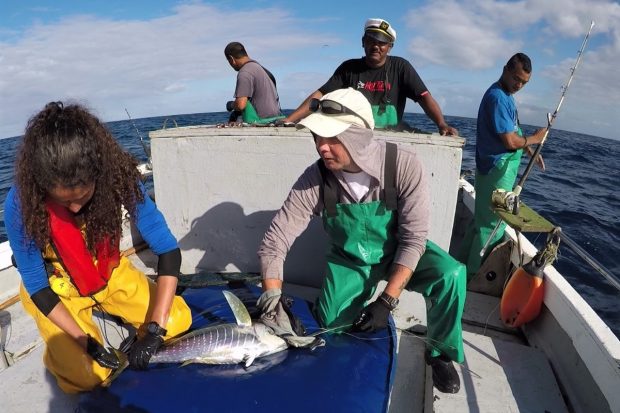
Just recently the island has approved a marine tourism policy which is complemented by a local marine accreditation scheme. The drafting of new regulations on marine tourism has started and we look forward to enactment by the end of March 2021. Again, a journey taken with the local marine tour operators who have supported the “blue” product that the island has to offer to it people and visitors.
And last but not least on policy, is marine development. This policy has also been drafted and is currently undergoing public consultation on island. Hopefully St Helena will soon have a strong robust legal system that defines how any marine developments are undertaken, through licensing and enforcement.

To draft new legislation and regulations, and ensure robust monitoring and enforcement are all progressed in a timely manner, people with the correct skill sets were required. Blue Belt has directly facilitated St Helena Government’s ability to create a Marine Enforcement section and dedicated marine-related legal service within the Attorney Generals Chambers. St Helena now has an experienced Marine Compliance and Enforcement Officer who will skill transfer to a local counterpart in due course, but in the meantime has been instrumental in shaping compliance and enforcement strategy. The Attorney Generals Chamber has been able to engage the services of a local qualified lawyer to progress all of the legal requirements for the regulations of the marine environment, after policy is agreed.
It is hard to quantify the “behind the scenes” work, but the teams both on and off the island have undertaken so much research and due diligence and created reports to ensure that the island has informed management options that it understands. The successes of the science, policy, infrastructure requirements and legislation have been no easy feat by any means, but human capacity to undertake the time commitment and physical demand of field work, often over and above expectation, has been an issue. So, a big well done to all the local and partner support staff for those long daily and sometimes weekly trips at sea to collect the data. Processes associated with the evolvement and approval of policy has also been quite tiresome, but nevertheless, we’re getting there and learning all the time!
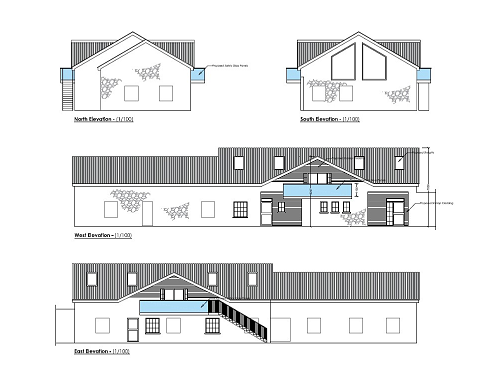
Most excitingly is the construction of the new modern, fit for purpose marine laboratory. The current lab is no bigger than small bedroom and has evolved over time from discarded furniture and equipment acquired as “hand me downs” with a few new pieces purchased from various historical Darwin Initiative projects. By no means is it ideal, but it works. The Blue Belt Programme has funded the conversion of an old customs freight terminal into a purposely designed marine laboratory, office space for staff and scientists and a marine visitor centre. With much work done in designing and planning over the past few years, we finally broke ground on the build on the 1st October and construction work is now speeding along. Thanks to hard work and with timeframes agreed, there is a view to the lab being operational by April 2021 and the visitor centre following soon after with additional support from the Blue Belt and the St Helena National Trust.
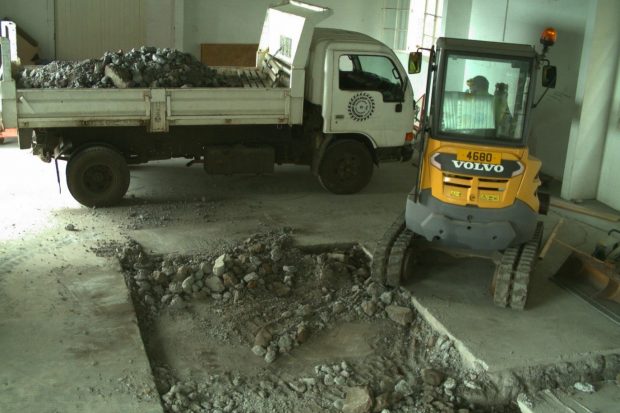
So here’s to Blue Belt! Thanks for the overwhelming support to this little island in the South Atlantic. Thanks for the sunburn, seasickness, frustration, elation and support to the vision of the St Helena Island working towards a well-managed, well informed sustainable use Marine Protected Area. All of the work to date has all been worth it! And it is truly a privileged to be a part of such a legacy project = watch this space.
To find out more on St Helena:
- Visit St Helena's website
- Like Governor's Office St Helena, Ascension and Tristan Da Cunha's Facebook page
- Follow Governor's Office St Helena, Ascension and Tristan on Twitter
To find out more on the Blue Belt programme:
- Read Blue Belt Programme 2016-2020 highlights
- Follow us on Twitter and Facebook
- Visit our GOV.UK website